US artist Andy Bauch hid messages in his Lego artworks. Blog reader Christian Baumann has now solved two of the codes.
Last week, I blogged about the paintings (or should I say “mosaics” or “installations”?) by US artist Andy Bauch. There are two peculiarities about Bauch’s artworks: first, they are made of Lego bricks; and second, each one encodes a message that represents a certain value in BitCoin or another crypto currency.
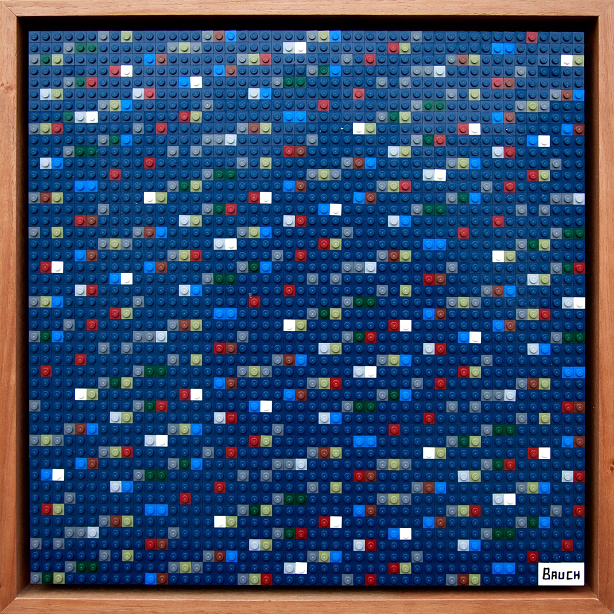
© Andy Bauch Studio, Los Angeles
My blog post was headlined “$10,000 worth of crypto-currencies …”, but I’m afraid, I have to disappoint you. Apparently, all the paintings have been deciphered by now, so there’s no money left.
However, this blog is not about money but about cryptography, and from a cryptographic point of view there are still a few things to win. Especially, we can look at the methods Bauch used to encode the cryptocurrency values (to be more precise, he encoded private crypto keys that lead to cryptocurrency wallets).
Christian Baumann’s solution
The first one who informed me about the solution of Bauch’s most important Lego code (the one he used for the BitCoin pictures) was blog reader Christian Baumann. Christian had found the solution himself. His first discovery was that in one picture there was a repetition after 210 units:
By interpreting the first 210 units as bits (light blue=1, dark blue=0), Christian received the following binary string:
1010011 0110100 0111001 1001010 1000001 1110011 1101110 0110111 0111001 0110100 1101001 1110001 1110110 1110010 0110110 1110011 1010100 1101111 1100100 1011000 1100110 1100100 1100110 0110100 0110001 1001110 1000011 1000110 1100001 1000100
This message converts to the following ASCII text (a binary-to-ASCII converter is available here: https://multidec.web-lab.at/):
S49JAsn794iqvr6sTodXfdf41NCFaD
This ASCII text is a private key, which can be converted to a Bitcoin address (e.g., using https://coinz.at/walletgenerator/):
So, Christian received the following public BitCoin wallet address: 1NmxAV1ze28U4Uuqg2fH1JTB8NtWKvTyhM
Others solved it, as well
However, Christian’s hope to get access to a BitCoin wallet provided by Andy Bauch was in vain. The wallet was already active, which means that somebody had solved the code before. As it seems, this person comes from Russia. He or she explaines how the code works on the following Russian website. All other BitCoin paintings have been decoded, as well
When searching for some more information, Christian found another blog post that explains Andy Bauch’s BitCoin Lego code. This one was published by James Stanley, a Bristol-based software developer.
In addition to the BitCoin paintings, Bauch also created artworks that hide the key for another crypto-currency wallet. As Christian found out, the codes used for these non-BitCoin paintings is different from the BitCoin code. After some analysis, he found the hidden code in a Dogecoin picture. The major challenge was to locate the relevant area in the painting:
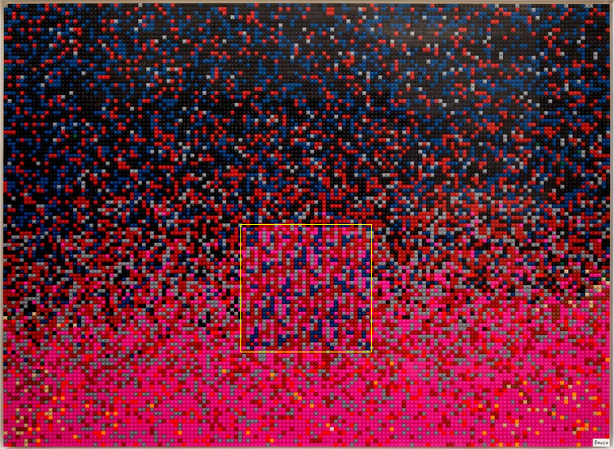
© Andy Bauch Studio, Los Angeles
Unfortunately, this challenge had also been solved before. It’s a shame that Christian’s great codebreaking work was not rewarded. A complete report of his findings is available here.
While the BitCoin code and the Dogecoin have been published, I haven’t seen an explanation of Bauch’s CannabisCoin code yet. The CannabisCoin code was used to hide a message in the following painting:
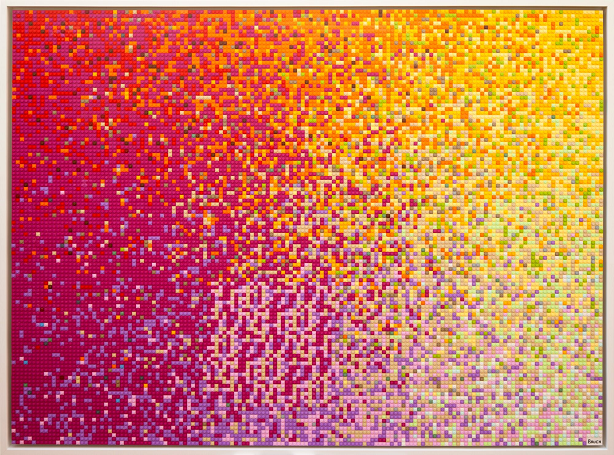
© Andy Bauch Studio, Los Angeles
Can a reader find this hidden message? I’m afraid, the money is already gone, but it would be interesting to know how the code works.
I hereby congratulate Christian Baumann and the others on having solved Bauch’s Lego codes. In addition, I congratulate Andy Bauch on this interesting kind of art. Bauch’s crypto paintings combine art and cryptography, just like Kryptos, the Cheltenham Listening Stones, the Cyrillic Projector, Charles Dellschau’s paintings, James Hampton’s installation and others have done before.
Follow @KlausSchmeh
Further reading: Crypto game Montecrypto: The first to solve 24 puzzles wins one Bitcoin
Linkedin: https://www.linkedin.com/groups/13501820
Facebook: https://www.facebook.com/groups/763282653806483/

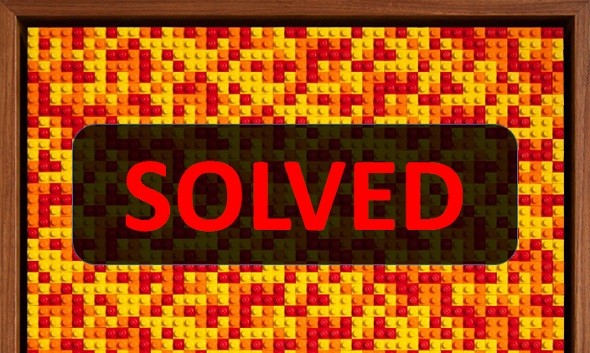

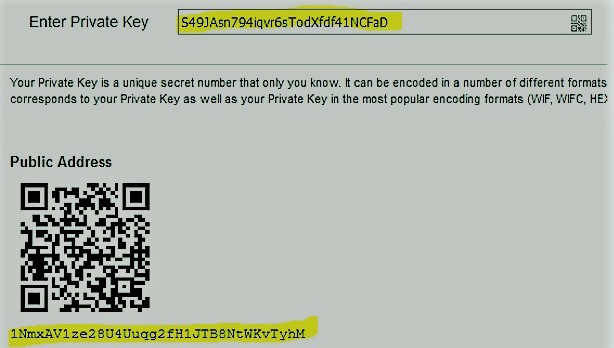

Kommentare (1)